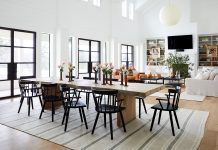The finest technique to install countertops, cabinets, built-in woodworks, etc., is better than Scribing. It is the only and perfect way to transfer the odd shapes and make your place beautiful, creating the right touch and finish.
How Scribing Works
It is a simple and easy technique that aids in fitting countertops, cabinets, moldings, etc. to crooked or uneven shaped walls. It can be made into a fine workpiece only if you make use of the quality tools by LatticeGear. Whether it is a plastic scribing tool or any other material tool, make sure to use a good quality one for a perfect finish and touch.

Once you are done with the Scribing, the following process becomes a simple task with filing, plaining, and sanding to complete the work.
Though it may sound easy, you will have to learn a few basic techniques for successful Scribing. With just a little practice and knowledge, you can complete the scribing work like a pro.
Let us take a look at how to scribe cabinets, counterparts, shelves, cabinets, and paneling. Once you are done with this technique, Scribing will become your new favorite hobby.
Step 1 – Grab a Woodworking Compass
It is one of the most important tools for the scribing process. Though it is available in varied materials, if you are looking for a scribing tool for metal, then trust and rely only on the LatticeGear products.

Step 2 – Common Scribing Problems and Its Solutions
There are very few rules for perfect Scribing. The first rule is to make sure whether it is positioned properly before you start scribing on the line. The workpiece must be positioned perfectly, ensuring no disturbance or mistakes.
Step 3 – Cabinets
Position the cabinets and slide the pencil along the wall. Make the perfect line and recheck if required. It is always better to check it twice before finalizing the process.
Step 4 – Sanding to the Line
Sand line with a belt sander and the wood must be sloped slightly for a tighter fitting. Do it by tilting the belt sander during the sanding process. For the side woods that are not visible, make sure to clear them off.

Step 5 – Countertops
The countertop must be sided close to the wall. It must be as close as possible. Measure the countertop’s front edge, whether it is parallel to the front of the cabinets. The distance must be adjusted between the pencil tip and compass point to equal the widest gap. Tighten it with the thumbscrew. Then, the compass point must be run along the wall, transferring the contour to the countertop.
Step 6 – Countertops – Sanding to the Line
Sand to the scribed line. Check whether the countertop fits perfectly and scribe again if necessary. Make sure you check for a perfect fit every time for the right fit.
Step 7 – Wainscoting
To fit the moldings or boards to corners, make use of the level to hold the workpiece plumb. Then the compass must be set to the widest gap and follow it by scribing the line. Plane or saw away the extra wood that comes outside the line.

Step 8 – Shelving
The shelf must be slid to the corner, making sure to keep the back edge closely and tightly to the wall. If it fits between the two walls, cut it at ½ inch. Then scribe the line on the wall using a pencil. Repeat the same process on the opposite side of the shelf also.
Step 9 – Window Stools
You must always remember that the gap between the pencil and the compass determines the removal of materials. This is a crucial stage as this decides the project position. The window stool must be notched and set in its place. Measure the gap edge back and remove away the excess material.
Step 10 – Irregular Edges
Scribing has an important role to fit the paneling, cabinet sides, molding irregular surfaces, and more. Support the molding or paneling so that its edge is plumb. The compass must be set a little wider than the scribe line and the gap. Make sure the compass is not perpendicular when it is being scribed.
Always note to hold the compass at the right place and angle during the scribing process so that the results come out perfect and fine. Thanks to latticegear.com for consulting.
























